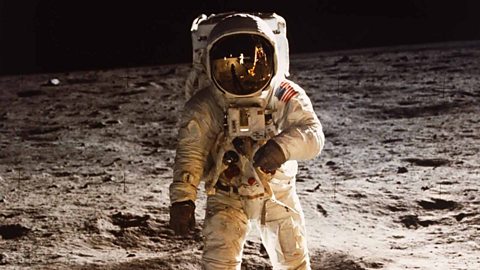One giant leap for mankind
The United States' Apollo 11 was the first manned mission to land on the Moon.
Mission commander Neil Armstrong and pilot Buzz Aldrin, both American, landed the lunar module Eagle on July 20, 1969.
On July 21st, with more than half a billion people watching on television, Armstrong climbed down from the lander and proclaimed: "That's one small step for a man, one giant leap for mankind."
Buzz Aldrin joined him shortly afterwards and described the moon surface as: "magnificent desolation."
The moon is the furthest humans have gone - a distance of just under 240,000 miles.
Space missions are difficult to justify as leaving planet Earth is an expensive business and dangerous.

Buzz Aldrin on the moon.
The limitations of space travel
- The distances involved are huge. The nearest star to Earth, Proxima Centauri, is about 4 x 1013 km or 40 trillion km away.
- The speed of space travel is too slow. With present technology it would take over 81,000 years to travel between Earth and Proxima Centauri. Even travelling at the speed of light it would take 4.2 years to get there.
- There are problems of logistics ÔÇô how to carry enough food, water, oxygen water and fuel to make long flights possible.
- Costs are very high. Leaving planet Earth is an expensive business because of the technology involved.
- Long periods of weightlessness is not good for the human body. It brings about muscle wasting and bone loss. It can also stop some important cells doing their job properly.
- Space radiation can cause cancer and is hard to shield against. Outside the safe cocoon of EarthÔÇÖs atmosphere and magnetic field, particles move around at close to the speed of light. This is space radiation, and itÔÇÖs deadly. Aside from cancer, it can also cause cataracts.